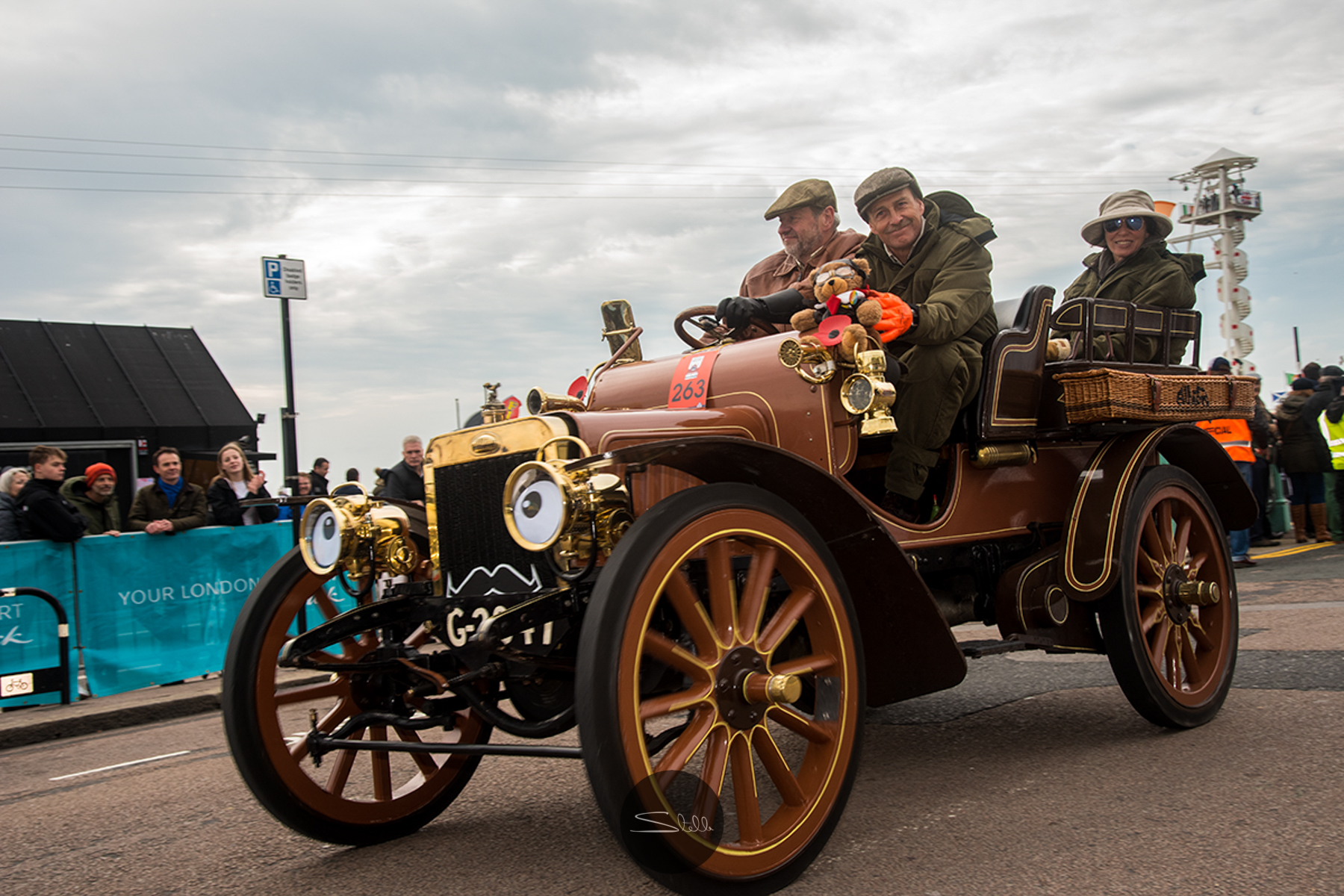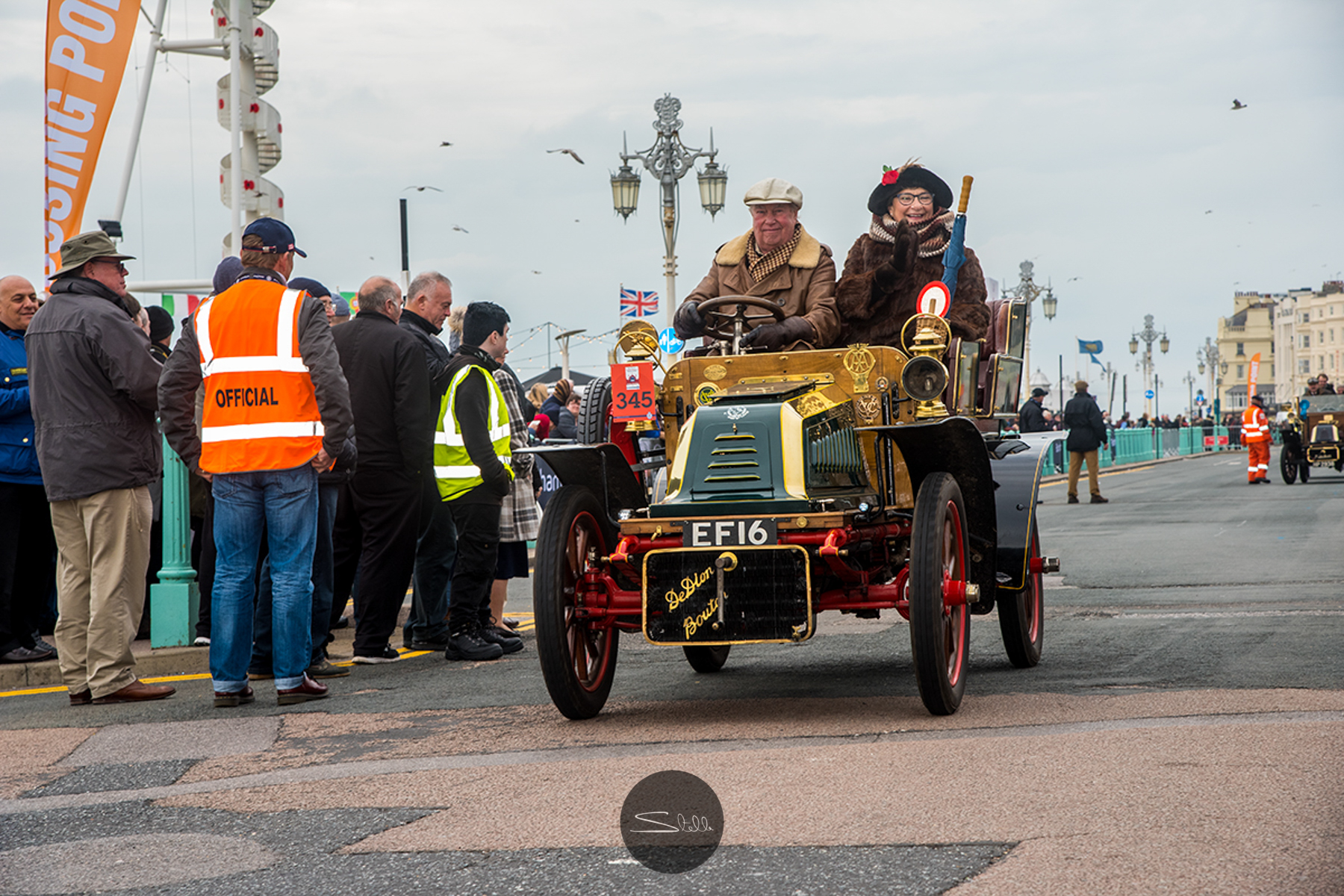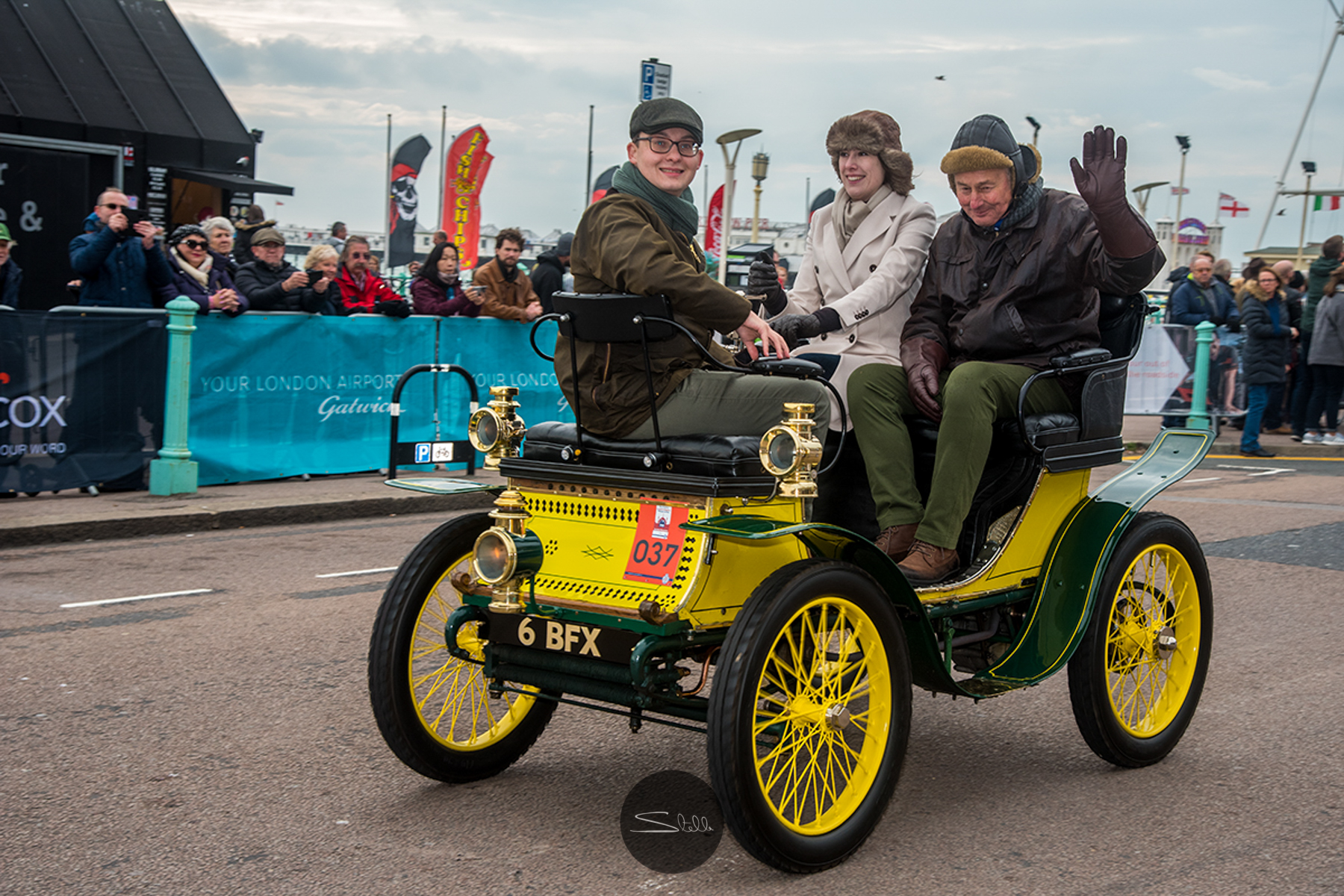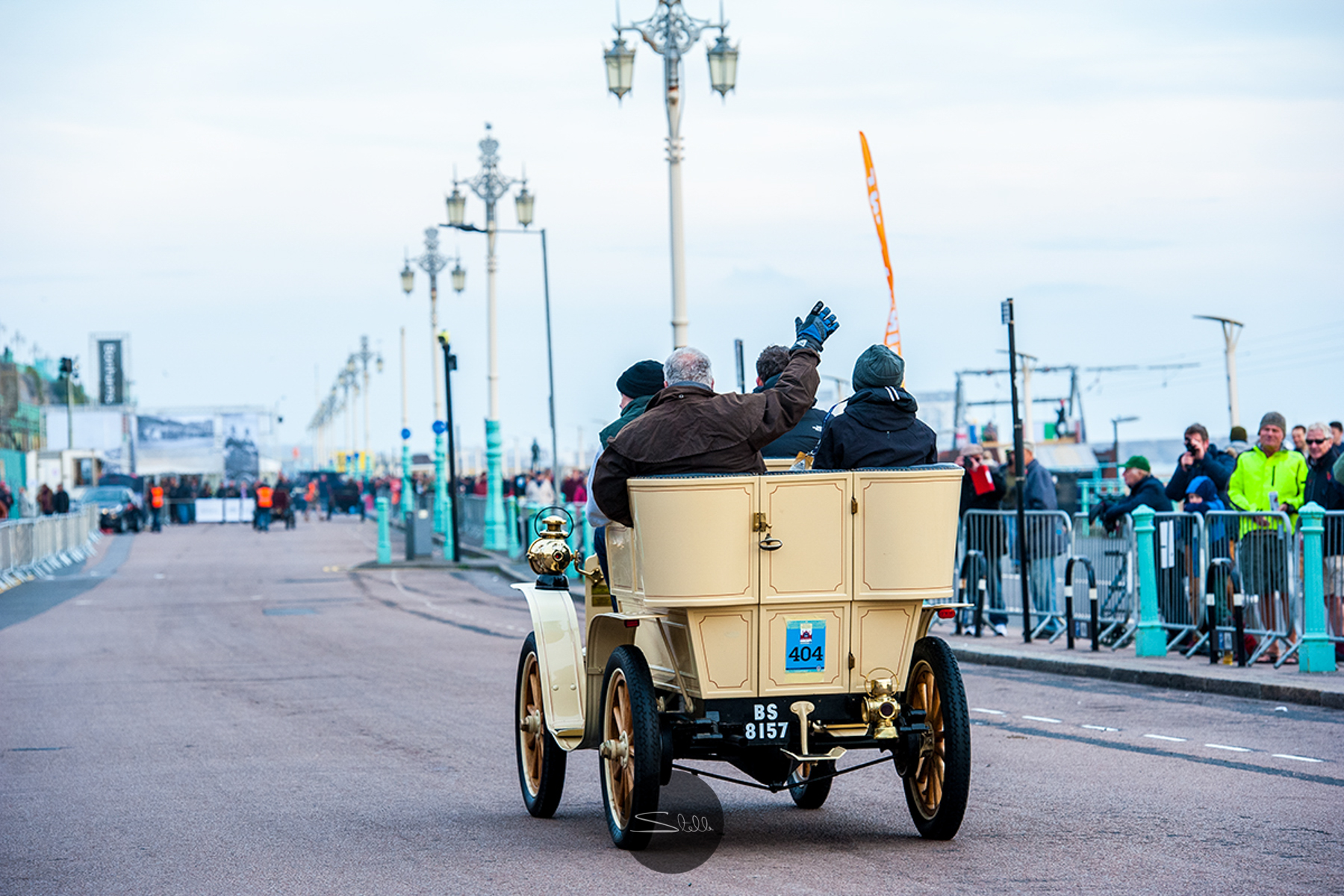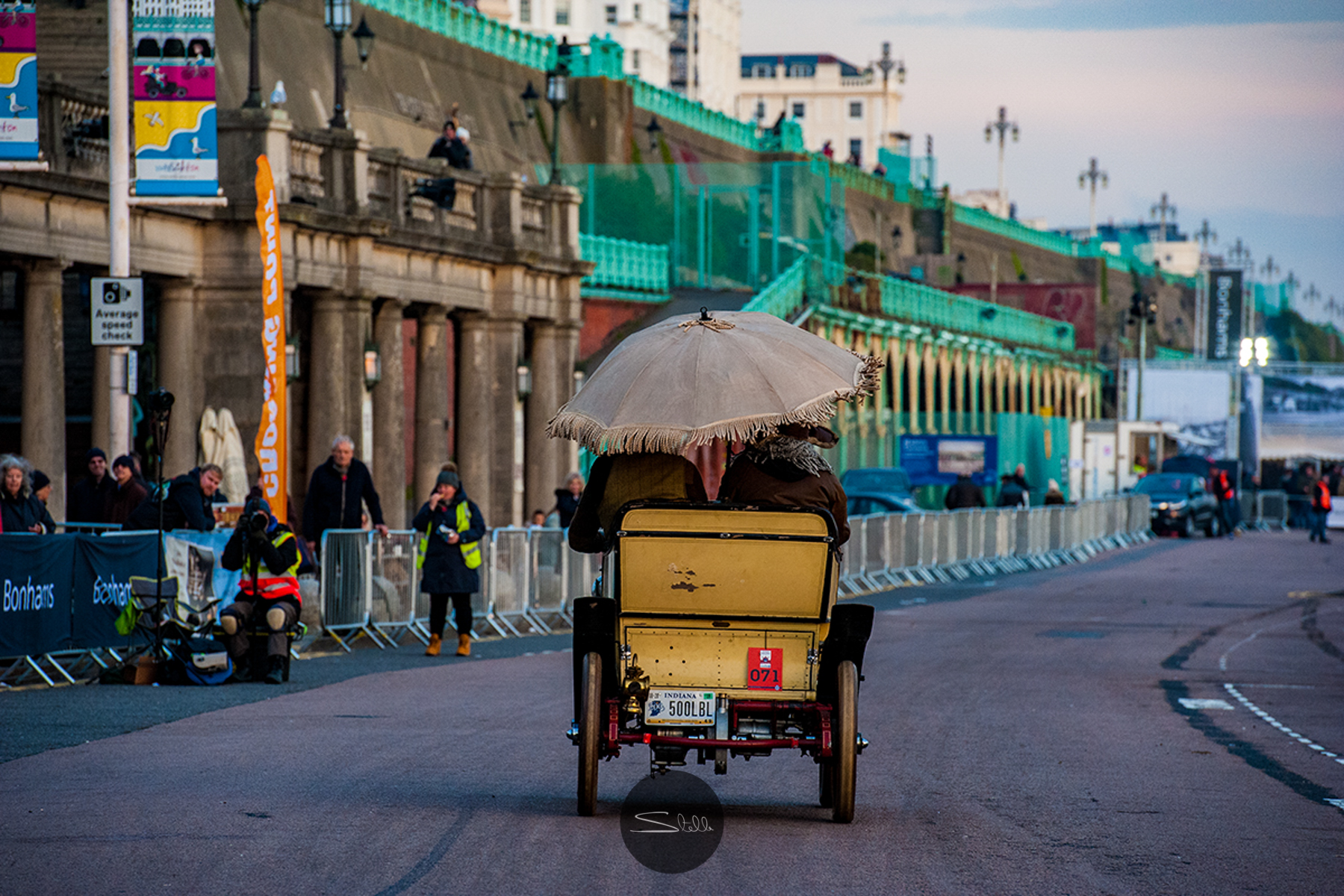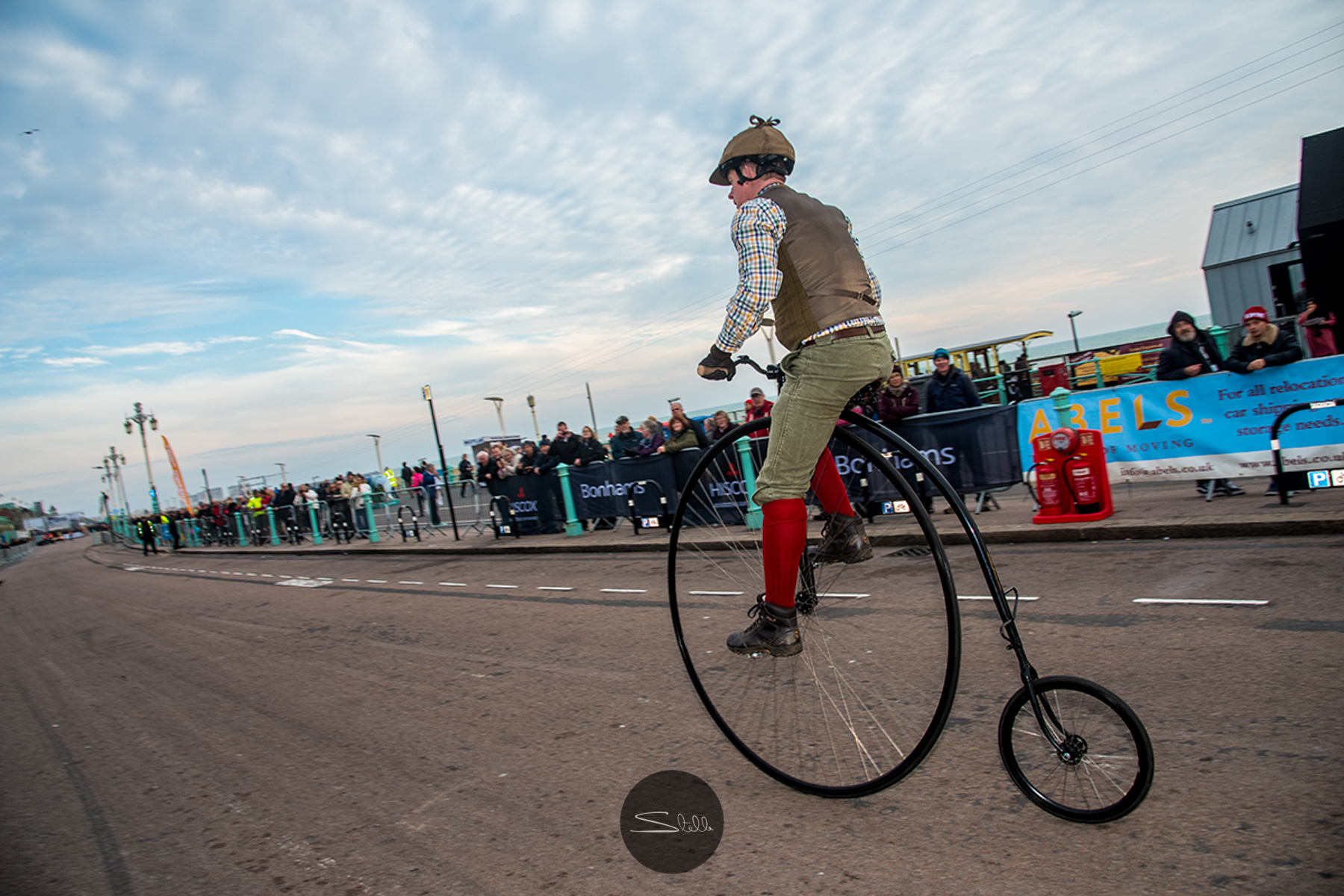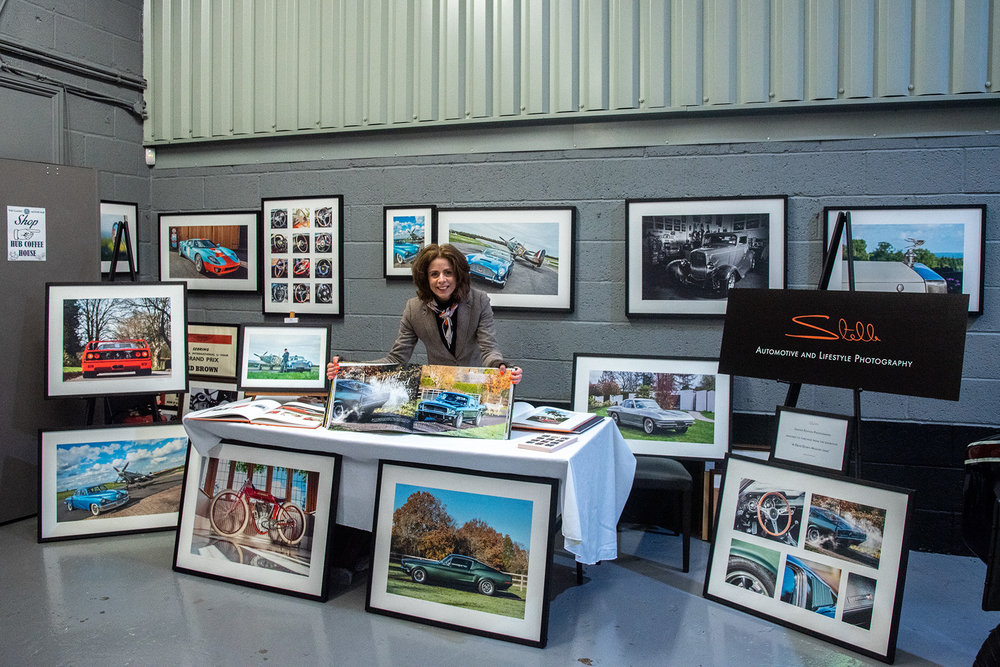As the sun rose on Sunday 4th November more than 400 drivers and their passengers set out on the world famous Bonhams London to Brighton Veteran Car Run supported by Hiscox.
Over the past four years I have had the pleasure of photographing these magnificent carriages crossing the finishing line at Madeira Drive Brighton and have come to recognise the returning cars, drivers and passengers with much admiration.
I arrived at 9am in anticipation to familiarise myself with the set-up, as it varies a little each year, and to catch up with the expert media team who started their day at Hyde Park to hear how the crowds, drivers and passengers were feeling at the start line.
Viscount Randal Dunluce driving his 1903 Martini 4 cylinders 18 HP.
The first of the remarkable, pioneering horseless carriages dating back to pre-1905 left Hyde Park at 06.59 am and for the next couple of hours a huge variety of vehicles streamed down Constitution Hill, past Buckingham Palace on to The Mall.
This year – and for the first time – the route was split in Parliament Square to minimise traffic delays and congestion in south London. Half of the eager participants travelled over Westminster Bridge and then followed the traditional A23 route via Kennington, Brixton and Streatham Common; the other half left over Lambeth Bridge then travelled via Vauxhall, Clapham Common and Tooting. The two routes merged on the A236 just north of Croydon with the entire magical cavalcade reunited at the spectator-friendly halfway halt in Crawley High Street.
Crawley High Street also marks an important stage on the Run as it’s the start of the Regularity Time Trial, the only competitive element of the event. Finishing 13 miles away in Burgess Hill, the Regularity Time Trial requires drivers to get as close to a chosen average speed as possible.
After Burgess Hill, the vehicles tackled yet more scenic but demanding Sussex roads over the rolling South Downs, passing through Hassocks and Clayton before re-joining the A23 for the run into Brighton and the seaside finish on Madeira Drive. Adding to this year’s spectacle, many of the busy pubs along the 60-mile route opened early and supporting the event’s charity partner The Movember Foundation.
The first car home was the 1901 Oldsmobile of Andres Melkus from Austria arriving on Madeira Drive at 10.23am, which is the same car and driver as last year, well done to Andreas and his trusted Oldsmobile!
The first car home was the 1901 Oldsmobile driven by Andres Melkus from Austria, 1 Cylinder 4.5 HP.
While the Run is famously not a race, the increasingly popular Regularity Time Trial does provide a competitive element. More than 320 entrants, more than ever before, elected to take part in the Trial by attempting to keep to a strict average speed for the stretch between Crawley and Burgess Hill. The winner was Paul Kelling in an Oldsmobile who covered the 13 miles at an average speed of 12.05mph compared to his 12mph target.
Paul Kelling in his 1904 Oldsmobile 1 Cylinder, 5 HP.
The weather had been kind this year as it was unseasonably warm making for a pleasant trip for the participants and spectators alike. For me it was a much more pleasurable eight hours photographing without the biting wind from the English Channel experienced during previous sunny years.
Christian Horner, Team Principal of the Red Bull Racing Formula One Team, driving a 1904 Panhard et Levassor owned by Lord Irvine Laidlaw, 4 Cylinders 15 HP.
Christian Horner giving an account of his journey from Hyde Park to Madeira Drive.
Here are a selection of photographs from the day at the finishing line in Brighton showing the atmosphere and emotion of this historic Car Run. To see a wider selection of images from the day simply click here to the Events section of the website.
Gardener and Presenter Alan Titchmarsh front seat passenger with driver Peter Read in a 1903 Daimler 4 Cylinders 14 HP.
Motoring Journalist and Presenter Quentin Wilson driving a 1904 Wolseley, 1 Cylinder 6 HP with his wife as passenger.
Route Guide showing this year’s split route to ease traffic congestion.
In total, nearly ninety per cent of the starters made it to Brighton before the 4.30pm deadline to claim a coveted finishers’ medal – just 44 of the starters failing to reach the sea front.
Participants from Imperial College in a James & Brown 1902 2 Cylinder 9 HP.
The sunsets on a successful Car Run, here’s to next year!
It was a fun and tiring day, but rewarding to hear the many stories the drivers gave about the history of their experiences as passengers and eventually drivers of the carriages taking part in the Car Run, that started when they were small children sitting on their parents’ knees.
I’m already looking forward to the Bonhams London to Brighton Veteran Car Run next year, don’t forget to save the date, Sunday 3 November 2019.
Stella








